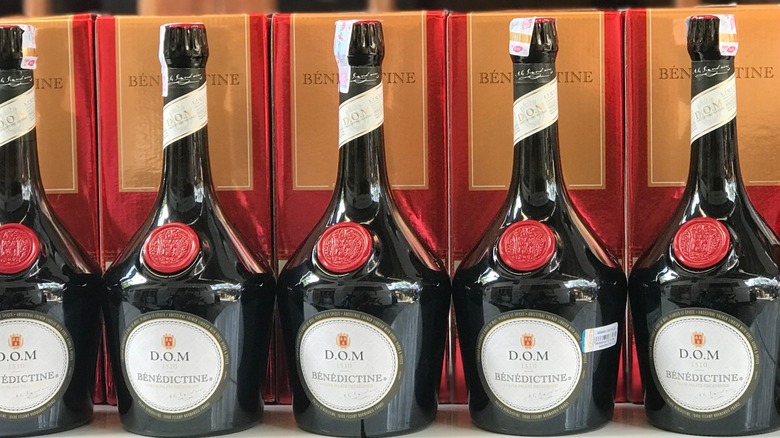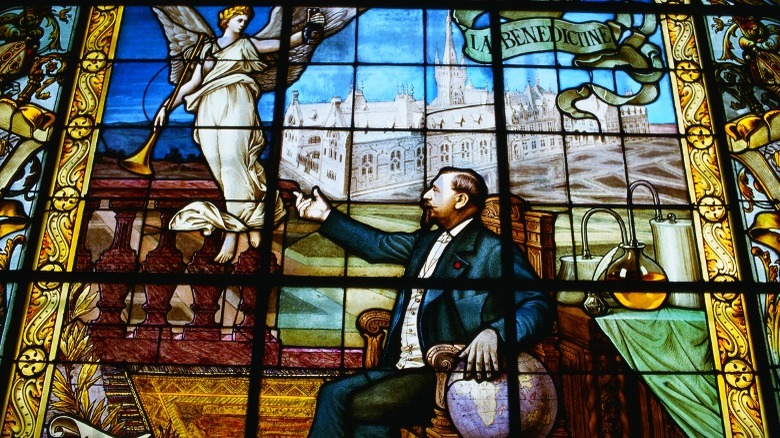What Type Of Liquor Is Bénédictine?
Bénédictine is a cryptic liqueur, its exact ingredients and origin shrouded in mystery — largely because only a few distillers can know the recipe at a time. It's an aromatic liqueur made of 27 different herbs and spices with notes of citrus and honey. Alcohol experts previously alleged that Bénédictine contained brandy or cognac specifically, though this claim has been denied by the brand. While this drink is of Catholic origin, having been originally conceived by a monk at France's Abbey de Fécamp as a medicinal remedy, we may know more about it thanks to the Jewish community.
The Chicago Rabbinic Council spoke with an anonymous Bénédictine representative to investigate the kosher status of the drink. The representative replied that Bénédictine contains "exclusively beetroot alcohol, water, sugar, caramel, and botanicals."
Brandy is made from grapes, not beetroot, so the cognac/brandy recipe rumors likely come from the fact that Bénédictine is one of the best pairs for a cognac cocktail. The distillery also sells a B&B (Bénédictine and brandy) version of the bottle that, of course, does contain brandy. Other ingredients the official Bénédictine distillery has confirmed include angelica root, saffron, almond, and honey. The rest are the subject of reports and speculation, with many believing that the elixir also contains hyssop, juniper, nutmeg, cinnamon, myrrh, aloe, mace, fir cones, vanilla, arnica, tea, red berries, coriander, clove, thyme, orange peel, lemon, and lemon balm. And you thought Dr Pepper's 23 mystery flavors were hard to crack!
A drink worthy of its own palace
Bénédictine's story starts in 16th-century Normandy, France, with a monk named Dom Bernardo Vincelli. He was part of the Catholic Bénédictine monastic order and sought to create a healing elixir with plants known for their remedial properties. Vincelli crafted the original recipe in the Abbey of Fécamp, but the recipe we know now was given to and marketed by a man named Alexandre Le Grand in the 19th century. Le Grand honored the history of the bottle and its creator by adding D.O.M. (deo optimo maximo, Latin for "to God, most good, most great") to the label.
He was so passionate about this liqueur that he even had the incredible Palais Bénédictine distillery built in its name. The bottle is still made there today. Tourists can visit the site, which now also serves as a museum, to explore the history of Bénédictine with artwork (including beautiful stained glass featuring monks and Le Grand himself), tours of the cellars, and a taste of the liqueur — they just can't expect to know what's inside the bottle.

